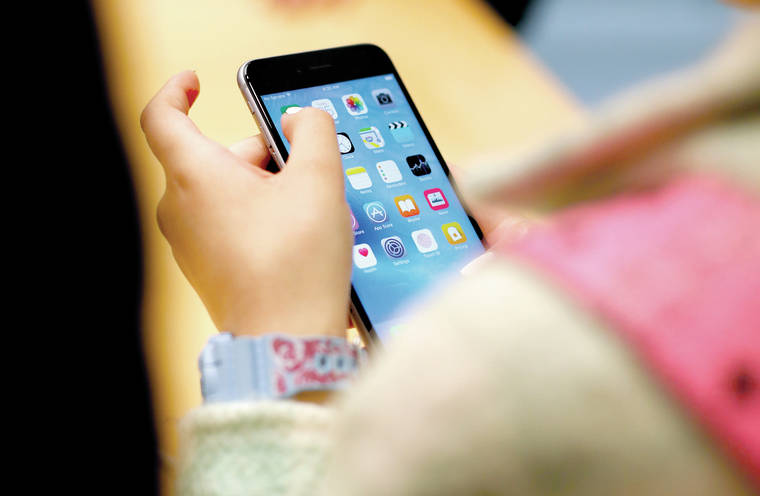HILO — To grow up healthy, keiki younger than 5 years old should have little to no sedentary screen time, more physical activity and get better quality sleep, according to new guidelines released Wednesday by the World Health Organization.
This is the first-ever guidance the WHO has issued regarding how much screen time children under 5 should get.
Screen time, such as watching TV or videos or playing computer games, is not recommended for children under 2 and should be limited to one hour for children ages 2-4, although less is better, according to the WHO, the United Nations’ health agency.
Lauren Stuart, a pediatrician with Hawaii Island Family Health Center, located at Hilo Medical Center, said the number of children she has seen using screens has increased dramatically.
“I rarely see a child in (the) clinic without a screen,” she said. “I started practicing 15-plus years ago. At that time, parents would pull out a book or toy and play with their child while they waited. Now I come, (and) parents are on the phone, and the kids are watching a video.”
Such use can have negative effects.
“The consequences that we see mostly in the really young children (are that) parents use screen time to calm them down or distract them when upset, instead of interacting (or) socializing with them,” said Stuart.
As a result, children don’t learn how to soothe themselves, and as an adult, “you need to calm yourself down and function when you’re upset,” she explained. “So these kids aren’t able to learn that because they’re automatically given a distraction.”
Extended screen time also can affect language and communication skills of young children.
“They tend to speak later, and they don’t communicate as effectively,” Stuart said. “So if a parent reads a book to a child, shows them the picture … the child has a chance to respond. If a parent hands a YouTube video to a child, there’s no interaction.”
One of the important elements of the guidelines is that instead of screen time, children should be playing, moving and using their imaginations, which is important for the under-5 age group, she said.
“They have a lot of energy to burn, they need to develop coordination and learn how to play with other kids in a fair way, and mostly just the social interaction of play and running around is different from the interaction of sitting down and playing a video game.”
Stuart said she follows guidelines set forth by the American Academy of Pediatrics, which are similar to those issued by the WHO.
According to the WHO, which also issued guidelines for sleep:
• Screen time is not recommended for infants under 1. They should have at least 30 minutes of physical activity, which includes at least 30 minutes of “tummy time” for infants not mobile.
• Children 1-2, should spend three hours doing a variety of physical activities at any intensity spread throughout the day, but more is better. Screen time is not recommended for 1-year-olds, and for children who are 2, screen time should be no more than one hour, although less is better.
• Children ages 3-4 should spend three hours doing a variety of types of physical activities. Screen time should be no more than an hour, but less is better.
With all children under 5, reading and storytelling with a caregiver is encouraged during sedentary times.
Likewise, the AAP, which offers a number of tips and suggestions for families regarding children and media, suggests that parents should set limits on media use and make unplugged playtime a daily priority, especially for very young children. Unstructured and offline play stimulates creativity.
WHO did not specifically detail the potential harm caused by too much screen time, but said the guidelines were needed to address the increasing amount of sedentary behavior in the general population, the Associated Press reported. It noted that physical inactivity is a leading risk factor for death and a contributor to the rise in obesity.
Email Stephanie Salmons at ssalmons@hawaiitribune-herald.com.



